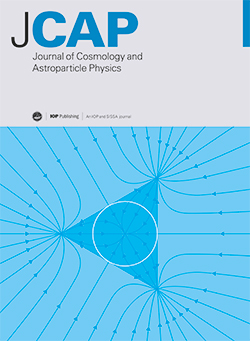Reducing nuisance prior sensitivity via non-linear reparameterization, with application to EFT analyses of large-scale structure
IF 5.9
2区 物理与天体物理
Q1 ASTRONOMY & ASTROPHYSICS
Journal of Cosmology and Astroparticle Physics
Pub Date : 2025-06-30
DOI:10.1088/1475-7516/2025/07/005
引用次数: 0
Abstract
Many physical models contain nuisance parameters that quantify unknown properties of an experiment that are not of primary relevance. Typically, these cannot be measured except by fitting the models to the data from the experiment, requiring simultaneous measurement of interesting parameters that are our target of inference and nuisance terms that are not directly of interest. A recent example of this is fitting Effective Field Theory (EFT) models to large-scale structure (LSS) data to make cosmological inferences. These models have a large number of nuisance parameters that are typically correlated with cosmological parameters in the posterior, leading to strong dependence on the nuisance parameter priors. We introduce a reparametrization method that leverages Generalized Additive Models (GAMs) to decorrelate nuisance parameters from the parameters of interest in the likelihood, even in the presence of non-linear relationships. This reparametrization forms a natural basis within which to define priors that are independent between nuisance and target parameters: the separation means that the marginal posterior for cosmological parameters does not depend on simple priors placed on nuisance terms. In application to EFT models using LSS data, we demonstrate that the proposed approach leads to robust cosmological inference.利用非线性再参数化方法降低干扰先验灵敏度,并应用于大型结构的EFT分析
许多物理模型包含有害的参数,这些参数量化了与实验无关的未知特性。通常,这些不能测量,除非通过将模型拟合到实验数据中,需要同时测量有趣的参数,这些参数是我们的推理目标和不直接感兴趣的讨厌项。最近的一个例子是将有效场论(EFT)模型拟合到大规模结构(LSS)数据中,以进行宇宙学推断。这些模型具有大量的干扰参数,这些参数通常在后验中与宇宙学参数相关,导致对干扰参数先验的强烈依赖。我们引入了一种重新参数化的方法,利用广义加性模型(GAMs)从似然中感兴趣的参数中去关联讨厌的参数,即使存在非线性关系。这种重新参数化形成了一个自然的基础,在这个基础上定义了在讨厌的参数和目标参数之间独立的先验:分离意味着宇宙学参数的边际后验不依赖于放在讨厌的项上的简单先验。在使用LSS数据的EFT模型的应用中,我们证明了所提出的方法可以产生稳健的宇宙学推断。
本文章由计算机程序翻译,如有差异,请以英文原文为准。
求助全文
约1分钟内获得全文
求助全文
来源期刊

Journal of Cosmology and Astroparticle Physics
地学天文-天文与天体物理
CiteScore
10.20
自引率
23.40%
发文量
632
审稿时长
1 months
期刊介绍:
Journal of Cosmology and Astroparticle Physics (JCAP) encompasses theoretical, observational and experimental areas as well as computation and simulation. The journal covers the latest developments in the theory of all fundamental interactions and their cosmological implications (e.g. M-theory and cosmology, brane cosmology). JCAP''s coverage also includes topics such as formation, dynamics and clustering of galaxies, pre-galactic star formation, x-ray astronomy, radio astronomy, gravitational lensing, active galactic nuclei, intergalactic and interstellar matter.
 求助内容:
求助内容: 应助结果提醒方式:
应助结果提醒方式:


